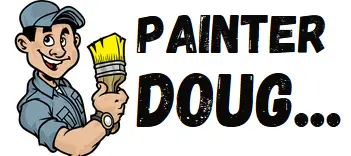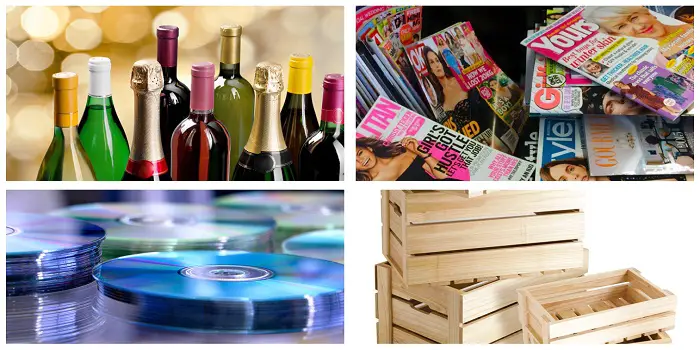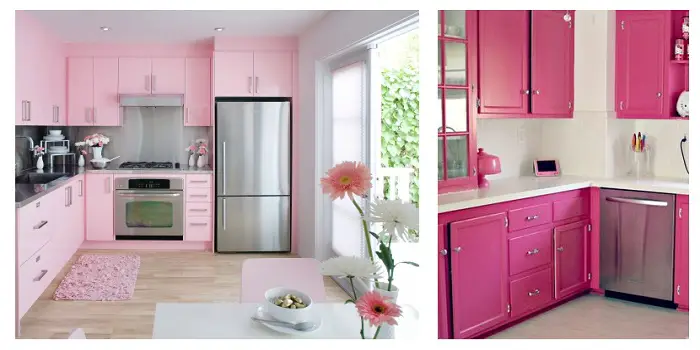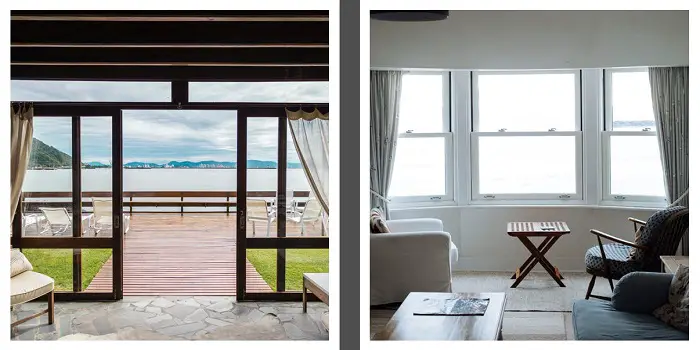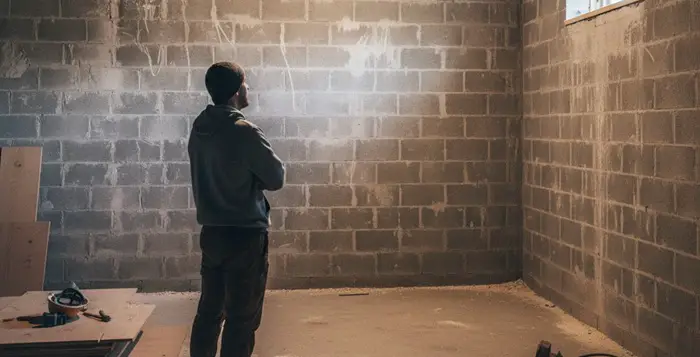
Unfinished basement walls can make even the most organized space feel like a construction zone.
Drywall is the go-to, sure—but it’s messy, time-consuming, and not always ideal for utility areas that deal with moisture, dents, or the occasional rogue hammer swing.
When I was fixing up my own garage, I quickly realized drywall wasn’t the only answer—it might not even be the best one.
That’s when I discovered a whole world of smarter, stronger, and easier alternatives that made finishing garage walls feel a lot less like a chore and more like a creative upgrade.
Whether you’re turning your basement into a workshop, giving your garage a polished look, or simply covering up those sad studs, there’s a drywall alternative out there that fits your budget, skill level, and style.
From plywood and metal panels to PVC and smart storage walls—these options bring form and function together without the drywall drama.
What's Here in the Article:
Drywall Alternatives for Basement Walls
Drywall for the basement is a fine enough choice, but it is not the easiest to work with. You must do a good deal of mudding, sanding, and taping before you finish it.
Other alternatives take far less effort to apply.
Below, I will outline different alternatives to using drywall for you to consider when designing the look of the walls and ceiling in your house’s basement. Check them out to bring new life to those often overlooked areas:
1. Plywood and Sheet Wood
Plywood is easily one of the most inexpensive drywall alternatives that give your space a one-of-a-kind personality and flair without having to pay the high price of wood planks, drywall, or even veneer.
This can be paired with some wall decals to bring out a country or farmhouse chic appearance.
Sheet wood and plywood are both straightforward to work with and are no more difficult to use than drywall.
So long as you feel comfortable operating a power drill, you will be able to install plywood.
You can also paint plywood any color you choose, so you aren’t necessarily limited to the natural color that it comes in.
2. Wood Planks
Wood planks may cost a bit more than sheet wood or plywood, but many homeowners consider their natural warmth and timeless visual appeal well worth the extra investment.
They instantly elevate a space, adding a cozy, rustic charm or a refined, elegant look depending on the finish and wood type you choose.
When used as wall coverings, planks and specialized basement wall panels can completely transform the room’s atmosphere—offering a stylish and durable alternative to traditional drywall without the mess of mudding, sanding, or painting.
Unlike drywall, which can crack or absorb moisture, properly installed wood panels hold up beautifully in the long run.
Once the planks are in place, maintenance is minimal. You’ll only need to ensure they remain dry and clean, especially in a basement environment.
Applying a protective lacquer or sealant beforehand helps prevent moisture absorption and keeps the wood looking polished for years, making it a low-maintenance and long-lasting wall finish that combines beauty with practicality.
3. Textured Wall Panels
Wall panels can make any space look elegant while also adding a bit of dimension and depth to a surface that is otherwise quite flat.
These panels are ones you used to see only in high-end cocktail lounges and boutique hotels, but they are becoming more popular in homes.
They are not as expensive as some of the other options though they can cost a bit more than some of the items on this list.
You can consider them like kitchen backsplashes in that you can get any manner of colors, designs and patterns, material types, and more to work with. The options are virtually limitless.
4. Veneer Plaster
This is probably the alternative that is most similar to drywall.
Even so, plaster is easier to work with than drywall. It doesn’t need as much skill or tool knowledge as it does to hang drywall, so those who are prioritizing ease of use above all may want to consider it.
That said, this list is likely the most time-consuming and labor-intensive option. Though it isn’t that hard, it can take an entire day to get it all up.
5. Lath and Plaster
Like veneer plaster, lath can be combined to whatever size you desire.
Lath is narrow strips of wood placed between ceiling joists and studs, laid down horizontally, and then coated with plaster.
Because drywall and plasterboard became popular, this style lost its trendiness for a while.
Today, many use it to add some texture to their walls. It is particularly great for curved surfaces at the edges of a room since you can warp and bend the texture and let it dry how you like it.
Through this method, you can create one-of-a-kind wall designs that are next to impossible with any other material.
6. Exposed Concrete Block
If you like a raw finish and a modern touch, you can just leave the structural area of the wall the way it is.
This kind of aesthetic can be difficult to pull off, if it is not done right, it can look like you have simply left a wall incomplete.
You could also paint over the cement to give it a textured panel that looks to solve the problem.
That said, if done right, this can be a beautiful and sophisticated way to decorate your room. It offers a minimal design and a modern industrial look that is difficult to get with other types of materials.
7. Brick and Masonry
A brick wall or stone wall is a classic style that will never fall out of trend.
These materials make a great choice for those who want to give their home a warmer atmosphere. You can change it depending on the color of the brick you use.
It is particularly well suited for suburban and country homes, and the materials in these houses are often mixed and matched.
This means that you will commonly see a home with a brick wall while the others are made out of drywall.
It can cost more than drywall, but it is a more sustainable option that you can count on to last for an entire lifetime without having to worry about any real cleaning or maintenance.
If you never intend to tear the wall down, this is a great choice.
8. Pegboard
Pegboard is a good choice for those who want to hang things on the wall, such as art, tools, and any crafts you want to keep close at hand.
It is great at reflecting light, so it stands out and makes the room look bigger all at once.
The material is quite strong, so you won’t have to worry about hanging heavy items on the wall.
9. Cement Board
Using cement boards across all of the walls will offer a feeling of brutalism in your home. This encompasses a lot of flat surfaces, right angles, and concrete.
This can be pricy, but it is worth it for those who want a really dramatic look. In areas that have high moisture and often struggle with mold, this is a great choice.
It is recommended that you only use it on one wall instead of all four.
This material is better used as accent pieces rather than in entire rooms. If you use them on all four walls, it can feel like a factory.
10. Wahoo Walls
If your basement walls are made of concrete or cinderblock, Wahoo Walls offers an innovative way to transform the space into a polished, livable area.
This system provides a finished look comparable to traditional drywall, but with significant advantages tailored for basement conditions.
Wahoo Walls uses magnesium oxide panels mounted on aluminum tracks, eliminating the need for traditional studs.
These inorganic panels are fully waterproof and resistant to mold and mildew, making them ideal for damp environments.
Unlike conventional drywall, there’s no need for screwing or drilling—the panels simply click together, streamlining installation and reducing labor time.
Once installed, the walls can be taped, mudded, and sanded to a perfectly smooth finish, ready for paint or other decorative treatments.
The system is pre-insulated, which helps with energy efficiency and keeps the basement more comfortable year-round.
11. Cork Board
These types of walls are similar to pegboards, although they can’t hold items as heavy as pegboards can.
They offer you a chance to have random designs across an entire wall while making it easy to thumbtack things to it or hang photos.
Cork board comes in a number of colors, sizes, thicknesses, and compressed cork chip densities.
It can not only scatter light throughout the room but also warm up its appearance.
12. Corrugated Metal
Panels of corrugated metal are those wavy sheets you commonly see on roofs.
You are free to use them indoors, but you should not use them on all four walls or even on an exceptionally large wall.
It is better to use this material instead to create a smaller accent wall. It is a rather inexpensive choice, and installing it is easy since all you need to do is screw it into the studs.
The biggest issue comes with cutting it to the proper size. You will need special metal shears, or a table saw in order to accomplish this.
13. Reinforced Fiberglass and Gypsum Panels
Reinforced Fiberglass and Gypsum Panels are gaining attention as durable, high-performance options instead of drywall, especially in areas that need added strength and moisture resistance.
This is essentially a similar idea to drywall and shows a similar finished product. What makes it different is that this is more scratch-resistant and durable overall.
These panels combine the structural rigidity of gypsum with the toughness of fiberglass, creating a wall surface that can withstand humidity, impact, and daily wear far better than traditional drywall.
There are a few surface designs of FRP panels that allow for a 3-D layer that you can add to it to give it a bit more dimension and depth.
They’re particularly useful in basements, garages, or utility rooms where standard drywall may deteriorate over time.
As a replacement drywall for unfinished walls, reinforced fiberglass and gypsum panels provide a clean, smooth finish that’s easy to install and maintain. They resist mold, mildew, and warping, ensuring long-lasting stability even in damp environments.
For homeowners looking for a stronger, more resilient solution, these panels deliver both durability and aesthetics, making them a smart upgrade for finishing or remodeling interior spaces.
14. Hanging Shelves and Book Shelves
Hanging shelves are one of the modern interior design trends that universally look good in any home.
It takes very little effort to install them, and they can generally be placed just about anywhere.
That said, they do come with some limitations on the weight that can be safely placed upon them in a way that a pegboard does not, for instance.
Naturally, these hanging shelves come with the advantage of storage, so they do more than just provide decoration.
Hanging shelves allow you to store various trinkets and decor on them, so you can always keep things looking fresh by changing what you are displaying from time to time.
Similarly, a bookshelf will do the job nicely. Whether you like to read or just have certain items you want to display, they are a good choice.
You can choose to have floor-to-ceiling bookcases or ones that only cover part of the walls.
This comes down to the size and shape of your room, as well as your personal preferences and budget.
15. Temporary Wallpaper
After deciding on the drywall alternative you want to use, you can consider ways to dress up certain materials.
Temporary wallpaper is among the easiest alternatives to simply painting a wall.
They are easy to press into place and then peel them away whenever you want to change the look of your interior design.
If you find a good vendor who is willing to work with you, you can easily customize the temporary wallpaper you want to use.
For this reason, it’s a good idea to locate some samples and stick them to the walls to see what you think about them before committing to a certain kind.
Depending on the wallpaper type you opt for, you may notice it is more expensive than paint, so be sure you are keeping an eye on the price as you shop if you are on a budget.
Paint may seem like the cheaper option, and perhaps it is initially, but the paint will need new touchups and coats to keep it looking its best in the way wallpaper will not.
16. Vinyl Siding
When it comes to finishing basement walls without drywall, vinyl panels are one of the least talked-about yet highly effective alternatives.
While drywall has long been the go-to choice, vinyl wall panels offer a durable, moisture-resistant, and low-maintenance solution—perfect for basements where humidity and water exposure are common concerns.
Homeowners who choose vinyl panels often appreciate their easy installation, clean finish, and long-lasting performance.
Unlike drywall, vinyl panels don’t require mudding, taping, or painting, which saves both time and labor.
They also resist mold, mildew, and cracking, making them ideal for basement renovations or remodeling projects where long-term durability matters.
Whether you’re aiming for a bright, finished look without constant upkeep or you want a cost-effective way to upgrade your basement walls, vinyl panels are an underrated yet smart choice for finishing basement walls without drywall.
17. Tapestries
Tapestries are an easy alternative to paint and wallpaper, especially if you enjoy using unique decorations that are eye-catching and bold.
You can find tapestries that hang from floor to ceiling, stretch across the entire wall, or only cover a certain amount of walls.
There are many ways to play around with tapestry products and decorate the walls exactly how you like.
You can use curtain rods or pins to stick the tapestries to the walls or even screws if you own the home.
You can also hang them using starch, but that can be a bit messy. It is a common method that has been employed for centuries and never quite goes out of style.
You can even design your own tapestry fabric if your budget allows you to make the space truly your own.
There really is no limit to hanging tapestries in your home except for the aforementioned mounting options; if you live in a rented space, you may not be able to put the necessary holes into the wall to properly hang them.
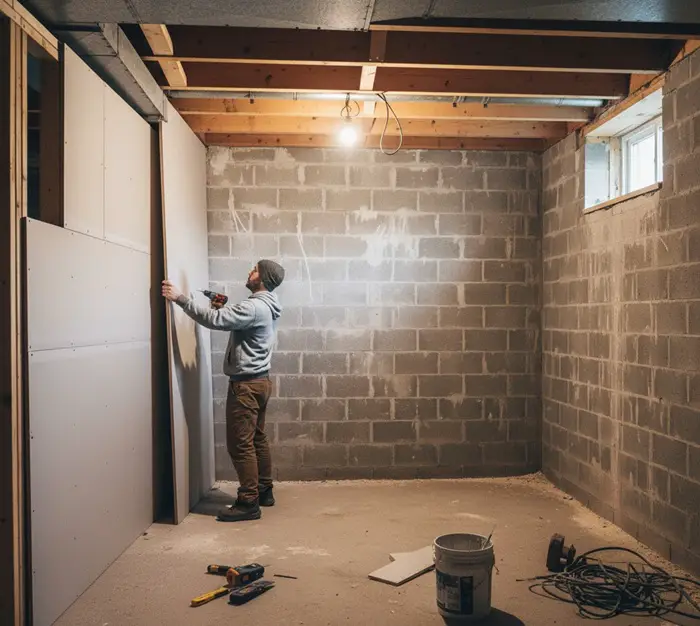
Why Your Basement Walls Need Specialized Solutions?
Your basement needs a different kind of wall—because it faces a world of challenges hidden beneath your feet.
Think about it: while the rest of your home breathes freely above ground, your basement is surrounded by soil, sealed off from sunlight, and constantly battling moisture and temperature swings.
That’s why what works upstairs simply doesn’t work below. Traditional drywall might look fine at first, but one humid season or minor leak later, you’ll find bubbling paint, musty smells, and even mold creeping in.
I remember the story of a homeowner who turned his cold, damp basement into a warm, welcoming family room. Instead of fighting endless repairs, he switched to specialized basement wall panels—insulated and moisture-resistant.
The difference was immediate: no more peeling paint, reduced humidity, and lower energy bills. The walls even looked cleaner and more modern, all without the maintenance hassle of drywall.
Here’s why these specialized walls make such a transformation:
- They fight moisture, not absorb it—keeping your basement dry year-round.
- They insulate naturally, helping maintain a comfortable temperature.
- They last longer than drywall, with no cracking, sanding, or repainting.
- They’re stylish and easy to maintain, making your basement truly livable.
Factors to Consider When Choosing a Basement Wall Alternative?
When it comes to transforming your basement, choosing the right wall material can make all the difference between a damp, dull space and one that feels warm, inviting, and built to last.
You might be exploring wall options instead of drywall, and that’s a smart move—because basements have needs that standard drywall simply can’t handle.
Here are seven factors to consider before you decide how to bring your vision to life:
1- Moisture Resistance
Basements naturally attract humidity, so look for materials that fight moisture instead of absorbing it.
Options like vinyl, fiberglass-reinforced panels, or insulated wall systems keep mold and mildew out—saving you headaches later.
2- Insulation & Comfort
A well-insulated wall can turn a cold basement into a cozy living area.
Some lightweight drywall alternative panels come with built-in insulation, helping stabilize temperatures year-round while lowering energy costs.
3- Durability Over Time
Think long-term. Your walls should stand strong against humidity and temperature changes without cracking or warping.
Reinforced materials or composite panels tend to outlast traditional drywall.
4- Ease of Installation
If you’re a hands-on homeowner, you’ll appreciate systems that are easy to install.
Many modern basement panels snap together effortlessly, cutting down on mess and labor.
5- Low Maintenance
Once installed, you shouldn’t have to constantly repair or repaint. Go for materials that wipe clean and maintain their finish for years.
6- Style & Personal Taste
With so many basement finishing ideas without drywall, you can still achieve the look you love—rustic wood planks, sleek panels, or textured finishes that complement your home’s design.
7- Budget & Long-Term Value
Some materials cost more upfront, but the savings from reduced maintenance, better insulation, and lasting beauty make them worth it in the long run.
Final Thoughts
Drywall has long been the go-to for building walls in homes, but just because it is the most popular does not mean it is the only choice for your basement.
From wood paneling to pegboard to concrete and plaster, there are tons of drywall alternatives for you to consider. Above, we have outlined 17 creative ways for you to ditch the drywall and make your home more reflective of your own taste.
Ultimately, the right wall system is one that meets your basement’s specific challenges while aligning with your vision. By choosing wisely, you’re not just finishing walls—you’re creating a basement that’s dry, comfortable, and truly livable for years to come.
Share the post "17 Drywall Alternatives for Unfinished Basement Walls"

Douglas Becker (aka Painter Doug) has over twenty years of experience as a painter in Adkins, Texas. At present, he resides in Florida with his family.
From painting multi-storeyed houses, condos, and apartments to large commercial buildings and small offices, he had served various customers in areas not only in Adkins but also in Southwest Florida, Sarasota, Naples, and many more. To know more about him check here.
